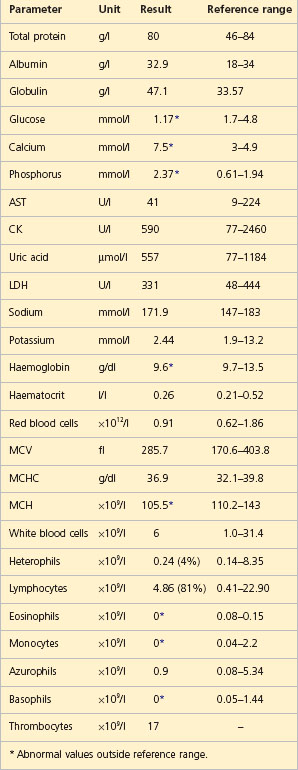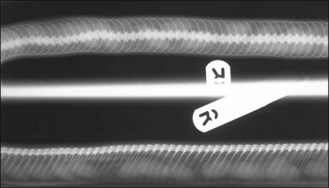19 Dystocia in a snake
Introduction
CASE PRESENTING SIGNS
A 5-year-old corn snake (Elaphe guttata) (Box 19.1), suspected to be female – although there was no previous history of reproductive activity – was presented with a month-long history of anorexia, reduced faecal production and condition loss.
BOX 19.1 Ecology of corn snakes
Clinical Examination
DIFFERENTIAL DIAGNOSES
Case Work-Up
Haematology and biochemistry
A blood sample was taken by cardiocentesis to perform a general health profile, investigating for signs of generalized infection or inflammation as well as renal or hepatic disease (Table 19.1). Although a few parameters were outside the normal ranges reported for corn snakes, none were significantly abnormal. A relative heteropenia was present, but the total white cell count was within normal limits and white cell morphology was normal on microscopy. Often poikilocytosis is noted with anorexia, but was not present in this case. Elevations in calcium and phosphorus are sometimes associated with reproductive activity.
Radiography
The snake was anaesthetized (via conscious intubation and IPPV with isoflurane) in order to facilitate positioning for lateral and dorso-ventral radiographs. The heart, lungs and trachea had a normal appearance. There were no obvious skeletal abnormalities. The radiographs demonstrated at least 13 oval well-defined homogeneous soft tissue opacities roughly midline throughout the caudal third of the coelomic cavity (Fig. 19.1), suspected to be either faecal material within the gastrointestinal tract or eggs within the reproductive tract. A less likely differential was multiple soft tissue tumours.
Stay updated, free articles. Join our Telegram channel

Full access? Get Clinical Tree




